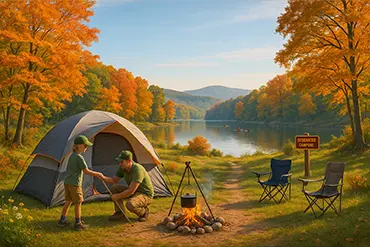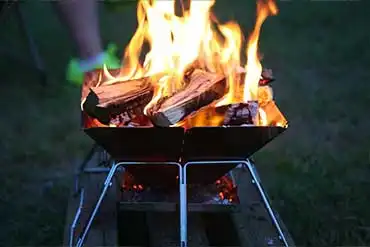Mushroom Hunting in Kentucky: A Natural Treasure Hunt for All Ages
There’s something undeniably rewarding about finding wild mushrooms in Kentucky’s forests. Every spring and fall, locals and visitors grab their baskets and hit the woods for what feels like a real-life treasure hunt. If you enjoy walking under the canopy of hardwoods, following winding creeks, and the promise of discovering wild food, mushroom hunting might just become your new favorite outdoor hobby.
Where to Start Your Search
Kentucky is packed with places that make for excellent mushroom hunting. Popular areas include Daniel Boone National Forest, the trails of Red River Gorge, and wooded parks scattered across the state. Moist soil, decaying wood, and healthy forests are a mushroom’s best friend. Start your hunt after a few days of rain, especially in the cooler months of spring and autumn. If you’re new to foraging, it pays to go slow and get familiar with your surroundings. Take time to notice how the sunlight, trees, and ground cover all play a part in where mushrooms appear.
Favorite Edible Mushrooms in Kentucky
- Morels: The star of the show for many foragers, morel mushrooms are usually spotted from late March through early May. They love to hide near dead or dying elm, ash, and poplar trees, sometimes popping up in old orchards or recently burned areas. Once you spot one, scan nearby, as morels tend to grow in small groups.
- Chanterelles: With their bright orange or yellow color and wavy, trumpet-like caps, chanterelles light up the forest floor in early summer. These mushrooms often grow near oak, beech, or hemlock trees, especially after summer rainstorms.
- Oyster Mushrooms: These grow in clusters on downed logs or stumps and can appear almost any time the weather turns damp. Look for their layered, white or pale tan fans on fallen hardwoods—especially beech and maple.
- Chicken of the Woods: This vibrant orange, shelf-like mushroom has a meaty texture and often grows on standing or fallen hardwoods. It usually appears from mid-summer to early fall and is easy to spot thanks to its bright color.
Other Mushrooms You Might Encounter
Beyond the big four, Kentucky’s woods are home to edible species like black trumpets, puffballs, and shaggy manes. At the same time, you’ll see plenty of mushrooms that are beautiful but not safe to eat. Some of the most poisonous mushrooms closely resemble edible types, which is why identification is so important.
How to Forage Safely
- Never pick mushrooms unless you’re sure of their identity. Bring along a mushroom field guide that covers Kentucky species. If you have any doubt, don’t eat it.
- Join a local group or go with an experienced forager. There are mushroom clubs and foray events held throughout Kentucky, especially during peak seasons.
- Use a mesh bag or basket for collecting. This not only keeps mushrooms fresh but also lets spores fall and spread as you walk, helping new mushrooms grow.
- Harvest respectfully. Take only what you plan to use, and avoid over-picking from one area. Leave behind old, rotten, or bug-eaten mushrooms to continue the natural cycle.
- Check the local regulations. Foraging is allowed in most Kentucky public forests, but some state parks and preserves have restrictions. Always check signs or call ahead before picking mushrooms.
Extra Tips for Kentucky Mushroom Hunters
- Time your hunt for the morning. Mushrooms are freshest early in the day, and you’ll beat other foragers to the best spots.
- Bring the right tools. A small knife, soft brush, and a field notebook are useful for harvesting, cleaning, and keeping notes on where you find success.
- Dress for the woods. Wear long pants, sturdy shoes, and maybe even tick repellent—Kentucky’s woods can be thick, and you’ll often be bushwhacking off-trail.
Why Mushroom Hunting Is Worth Trying
Hunting mushrooms in Kentucky is about more than a delicious side dish for dinner. It’s a chance to slow down, enjoy the fresh air, and see parts of the forest you might otherwise walk past. Whether you’re searching for your first morel or just enjoying a hike with your kids, every trip teaches you something new about the land. And on those lucky days when you fill your basket, you’ll bring home a taste of Kentucky’s wild side.
Remember: When in doubt, throw it out. No mushroom is worth risking your health. Take your time, learn from experienced foragers, and enjoy every step of your natural treasure hunt across Kentucky’s great outdoors.



